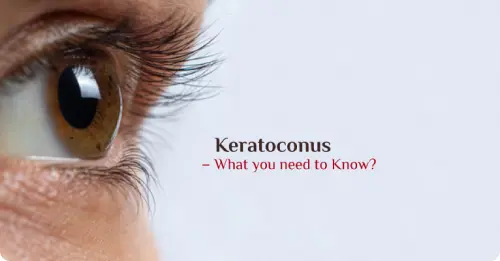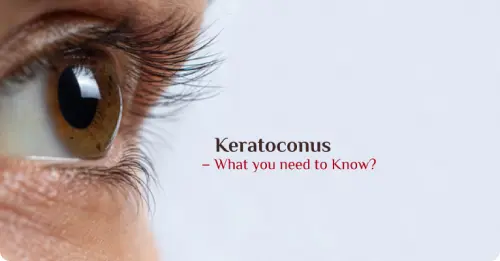Anish
November 17, 2023
Ayurvedic eye treatment helped heal my eyes, after Western doctors declared my condition 'untreatable'.
Some years ago, I had a cataract operation. At the time, I was overly anxious and excited to have my vision improved. Cataract operations are so routine and quick that I couldn't wait for the results. After the operation, I opened my right eye, expecting 20/20 vision.
Unfortunately, this was not the case. My sight went unchanged and remained at 20/60. I was diagnosed with idiopathic perifoveal telangiectasia shortly after. This is a rare, irreversible condition in which there is leakage of fluid from extra blood vessels around the fovea, a part of the eye that allows sharp vision for reading and watching television. The worst part was not just that this condition can lead to blindness, but that there is no known cure in the allopathic system of conventional medicine.
I was given one option, an expensive non FDA-approved injection called Avastin, which had no guaranteed results.
While I was still contemplating whether I should go for the injection or not, my job brought me to India. I went door-to-door looking for answers, exploring everything from homoeopathy, naturopathic doctors, eye specialists, to mystic men with healing powers and quacks with claims of magic cures. Finally, I ended up in an eye clinic in Kerala, southern India. The clinic, called Sreedhareeyam, practiced Ayurveda --a system ancient Indian medicine, developed over thousands of years of trial and error.
The head ayurvedic doctor assured me with confidence that the clinic could definitely arrest the leakage and further deterioration of my eye, but could not guarantee restoration of the already deleterious effects of the damage already done.
This news was very reassuring. After three weeks of intense treatment in the clinic, I returned to Vancouver. My total expenses, including lodging, fees, treatments, a four-month supply of medicine and all meals, was only $800 CAD. None of this, of course, was covered by the Medical Service Plan (MSP).
How did this ayurvedic treatment work? My typical day started daily at 5:30 am, with freshly prepared mixture of herbal extracts called kashayam. At 7 am, I was off to the massage centre where two strong masseurs were ready to tone me with specially prepared oil mixtures. They work on you in the such synchronized time that you would think only one person is massaging you. At around 9:30 am, I would begin the netra dhara, a special cleansing technique of pouring of herbal extracts in a stream over the eyes for 15 – 20 minutes.
After receiving treatment, Ashok Puri and his fellow patients enjoy their surroundings.
After lunch, I went through shirodhara, which involves gently pouring of liquids over the forehead -- the third eye, in Hindu religion. Of all the treatments, I loved the shirodhara the most, during which I felt completely stress-free.
I was also treated with khizi, a massage given through heat which essentially involves very hot oil being applied through a technique similar to the energetic strokes of a wire brush.
All the above treatments are essentially preparing the patient for the final treatment, which is performed for the last full week. Tharpanam means retention of medicines over the eyes for 30 minutes or more a day. Big wells of dough are put onto your eyes, and are poured on with warm herbalated ghee (clarified butter). The frequency and dosage depends on the extent of the problem. You are kept blind folded for almost three hours with the most refreshing bandage I have ever felt. Imagine petals of cooling flowers being used, instead of cotton.
Evenings are free time, so people gather in the front of the old home of the family to share their stories and experiences. Some sing hymns, Bollywood songs, and people from different regions tell a variety of jokes. Many people go to the evening congregation at the temple. It is a delightful sight to see all the walls of the temple lit with thousands of diyas (oil filled lamps). The place is filled with high energy. Everybody has a positive attitude and is in good spirits. Dejected people who had previous failed treatments feel once again full of hope after hearing the success stories of others.
Most of the medicines used in the clinic are prepared from the herbs grown on-site. Panchkarama, herbal massages, shirodhara, basti, netra dhara and tharpanam are the main treatments. The most common treatments are for near-sightedness, glaucoma, diabetic retinitis, retinitis pigmentosa, age-related degeneration and diseases related to the optic nerve.
When I came back, my ophthalmologist in Vancouver was surprised to find that there was no leakage and that my eye site had become 20/20 in both eyes. He taunted me as to why I was still wearing glasses. Since the appointment, I only wear glasses while reading.
The Sreedhareeyam eye clinic is operated by a team of highly trained and experienced ayurveds (doctors). The business has been running in the family for many generations. The premises is set up in a resort-like facility away from the hustle of big cities and located near a small village. It has a capacity for over 300 patients and escorts, and contains a gorgeous kitchen which prepares all fresh vegetarian meals, as well as a canteen with internet facilities. It has a large research and development department and modern factories where the clinic's medications are manufactured. About 10% of the patients are from abroad, 35% are from the city of Kerala, and the rest come from from all parts of India.
The dedication, sincerity of purpose, and a belief in the Hindu Goddess Badri Maa are quoted as the main reasons for the successful treatments of all the patients. Morning and evening prayers are performed daily by most patients and the doctors.
Ayurvedic ophthalmology, or Netra Chikitsa, is a well-documented branch of Ayurveda, the ancient holistic medical science. Numerous Ayurvedic documents cover treatments for 70 to 90 eye ailments. Ophthalmology is taught up to the post graduate level, which takes up to eight and a half years to complete.
Most eye-patients reach this treatment centre after exhausting all other options available to them. Presently, ayurvedic medicine is said to be the last hope for people who suffer from blindness. The specialists and doctors I have seen in Canada cannot believe that this ayurvedic treatment is working, nor can they explain to me why my condition is not worsening.
Richard Dawkins, a renowned British ethologist, once said "there is no alternative medicine, there is only medicine that works and medicine that doesn't work.” It makes me wonder why the mainstream medical profession does not open its doors and gain some insight into the magic of these so-called alternatives, complementary systems. Most of these alternatives practitioners are finding it hard to compete with the mainstream system, as their treatment is not recognized by our government.
Regardless, I go to my clinic in India for annual checkups and treatments. I do not know what brings me back every year. It may be the faith in the doctors, the medicines or the Goddess.
https://www.sfu.ca/diasporas/blogs_ayurvedic_treatment.htm






